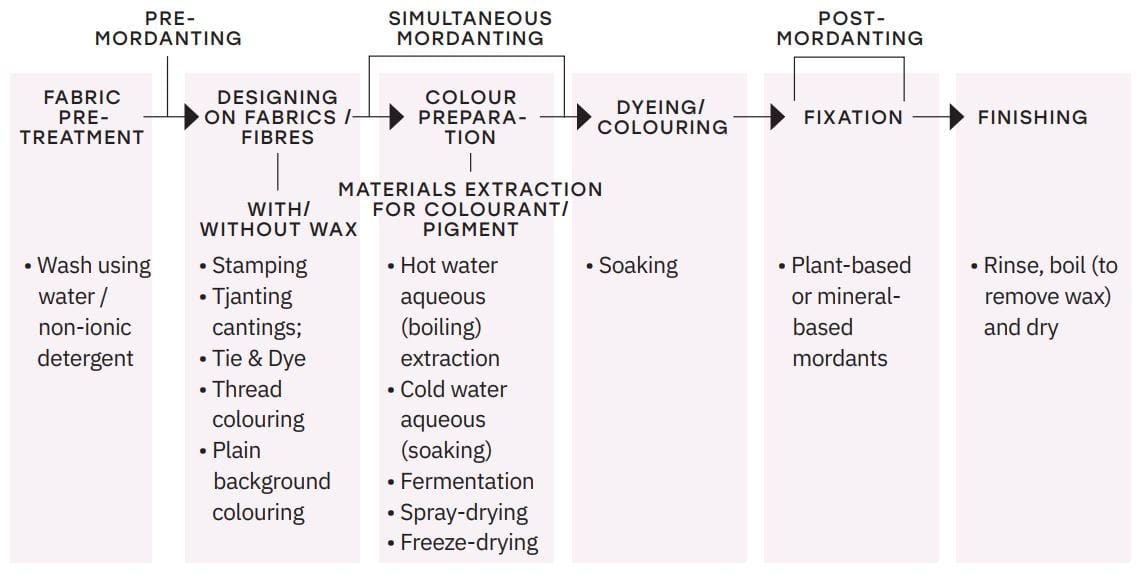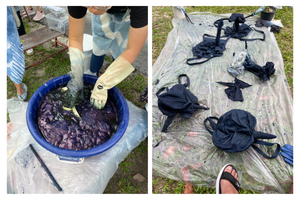SUSTAINABLE DEVELOPMENT GOAL (SDG) No. 12: Responsible Consumption and Production is probably one of the reasons creators and producers are advocating green practices; these can go from adopting eco-friendly materials (raw and supporting materials) to using green production mediums, techniques, processes, eco-packaging, etc. The same trend can be observed among textile artisans who live as “ambassadors” for the environment.
A study[1] by researchers from Universiti Malaysia Kelantan (UMK) highlights the resurgence of local knowledge in textile dyeing using colourants/pigments extracted from natural resources, including insects/invertebrates (e.g. sea snails), plants (e.g. fruits, leaves, flowers, barks, roots, fungi, rhizomes, etc.), and soils and minerals (e.g. mud, orpiment, graphite). Figure 1 summarises the findings on the general process flow of natural textile dyeing, indicating the common techniques employed.







